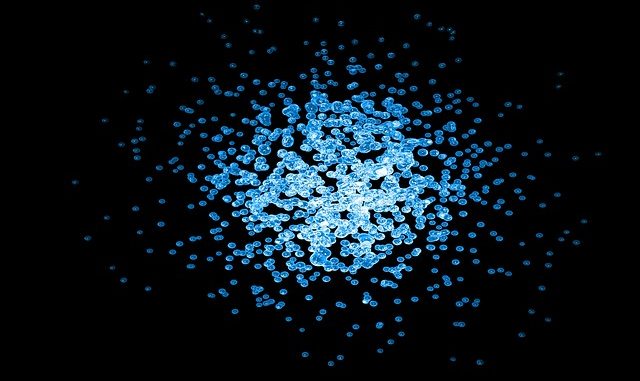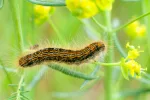
Adeno-associated viruses (AAVs) are small, non-enveloped viruses that belong to the family Parvoviridae. They are named “adeno-associated” because they were originally discovered as contaminants in adenovirus preparations. AAVs are considered as dependoviruses because they require helper functions from other viruses, such as adenoviruses or herpesviruses, for efficient replication and production.
Recombinant adeno-associated viruses (rAAVs) are suddenly of considerable interest in the realms of gene therapy. The therapeutic benefits are considerable because AAVs are non-pathogenic in humans, they can be constructed to target different tissues using particular and various serotypes and they have long-term efficacy (Ferrari et al., 1997; Athanasopulos et al., 2000).
The key characteristics of AAVs
Genetic Material
AAVs have a single-stranded DNA genome. The genome is small, ranging from about 4.7 to 5.4 kilobases in length.
Structure
AAVs have an icosahedral capsid composed of 60 protein subunits called capsomers. The capsid protects the viral genome and plays a crucial role in viral entry and transduction.
Serotypes and Variants
AAVs exist in various serotypes, each with different surface properties and tropism for specific cell types or tissues. Common serotypes used in research and gene therapy include AAV2, AAV5, AAV8, AAV9, and many others. Additionally, researchers have generated engineered variants and chimeric AAVs to expand the range of target cells and improve vector properties.
Non-pathogenicity
AAVs are generally considered non-pathogenic to humans and do not cause any known diseases. They have a long-standing safety record, which contributes to their widespread use in gene therapy.
Gene Delivery
AAVs are widely utilized as gene delivery vectors in gene therapy and genetic research. They have the ability to efficiently transduce both dividing and non-dividing cells in various tissues, including the liver, muscle, central nervous system, retina, and others. AAV vectors can deliver therapeutic genes or genetic material for research purposes into target cells, allowing for the correction of genetic disorders or the study of gene function.
Stability
AAVs are relatively stable and can withstand a range of environmental conditions, including low pH and high temperatures, allowing for storage and transport.
The most popular method for commercial production of rAAVs so they can be used clinically is to generate a triple plasmid-based transient transfection of HEK293 cells. In rAAV production, three plasmids are needed:- GOI plasmid, RepCap plasmid, and helper plasmid. These are co-transfected into HEK293 cells. The transient transfection process allows for rAAV manufacture over a particular period but limited amount of time. There is no integration of the viral DNA into the host cell genome.
The Challenges
Adeno-associated viruses (AAVs) are commonly used as gene delivery vehicles in gene therapy and genetic research due to their ability to efficiently deliver genetic material to target cells. However, the production and analysis of AAV vectors come with several challenges.
There are some key challenges associated with AAV vector production and analysis.
AAV Vector Production
(a) Scalability
Scaling up the production of AAV vectors can be challenging. The conventional methods for AAV production often rely on time-consuming and labor-intensive techniques, such as transfection-based approaches using mammalian cell lines. Scaling up these methods while maintaining vector quality and consistency can be difficult.
(b). Purification
Purifying AAV vectors from the host cell contaminants is a critical step. It can be challenging to achieve high vector purity without affecting vector yield and potency. Impurities like empty capsids, host cell proteins, nucleic acids, and other viral contaminants need to be effectively removed.
(c). Yield and Productivity
Obtaining high yields of AAV vectors is important for both research and therapeutic applications. Enhancing the productivity of AAV production systems to generate higher vector titers is a persistent challenge.
Of all the challenges, the biggest by far in rAAV manufacture for example is the limited production capability which simply cannot meet demand. This limitation raises the cost of any AAV-mediated gene therapies.
Vector Characterization and Analysis
(a). Potency Assessment
Determining the potency or functional activity of AAV vectors is crucial for assessing their therapeutic potential. Developing reliable and accurate methods to measure vector potency can be challenging, as it involves assessing parameters like transduction efficiency, target gene expression, and biological activity in relevant cell types or animal models.
(b). Vector Tropism and Targeting
AAVs can exhibit different tropisms, i.e., preferences for specific cell types or tissues. Understanding and characterizing the tropism of AAV vectors and their ability to target specific cell types accurately is essential for optimizing their therapeutic applications.
(c). Immunogenicity
AAV vectors can elicit immune responses in patients, which can impact the efficacy and safety of gene therapy. Assessing the immunogenic potential of AAV vectors and developing strategies to mitigate immune reactions pose challenges. (d). Stability and Shelf-Life: Ensuring the stability and maintaining the potency of AAV vectors over time is critical. Stability challenges include issues related to storage conditions, vector aggregation, degradation, and loss of transduction efficiency during long-term storage.
AAVs have emerged as a valuable tool in gene therapy due to their favorable characteristics, such as efficient transduction, low immunogenicity, and the ability to provide long-term gene expression in certain cell types.
Addressing these challenges requires ongoing research and development efforts to optimize AAV vector production systems, improve purification methods, refine potency assays, enhance targeting capabilities, and to develop strategies to minimize immune responses and ensure vector stability. The use in clinical trials and research continues to expand and makes AAVs a significant component of the gene therapy field.
References
, , , . (1997) New developments in the generation of ad-free, high-titer rAAV gene therapy vectors. Nat Med. 3(11) pp. 1295–1297 (article) .

Leave a Reply